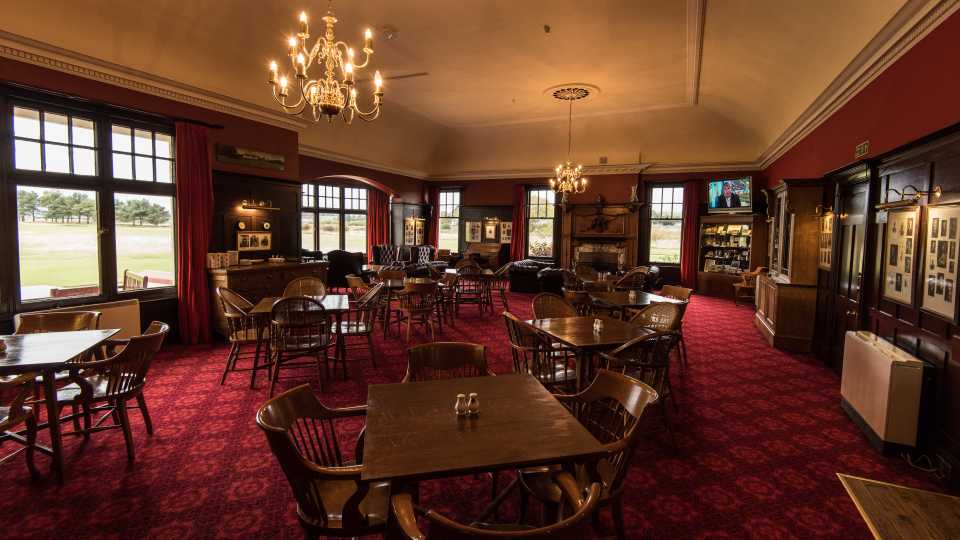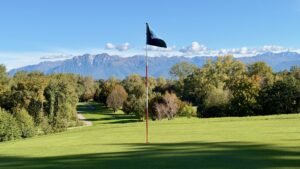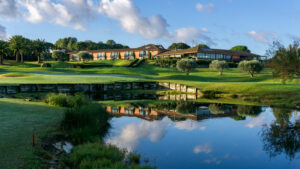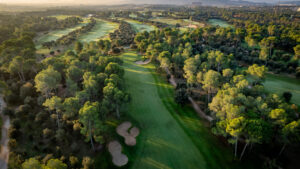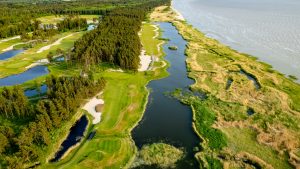The first hole is a very straightforward par four on completely flat ground. A few well placed bunkers, but not very interesting. The second hole, a par five, also very flat. The third, a par five, slightly dogleg right, but rather flat.
By now I started to wonder; why all the hype? The course is rather ordinary. Are we really at the right course? What is so special?
Then it happens. After you walk through some pines, the course opens up and quickly changes character, reaching the land so eloquently described by the then Secretary in 1924 as “of the most unpromising looking ground from a Greenkeeper’s point of view consisting of large hummocks and deep ravines with marshy looking bottoms, and covered with the coarsest of bent grass, whins and rushes; but to the Golf Architect giving great promise of many sporting holes and shots”.
From here on, all the holes have their own distinct identities, every hole with new surprises and difficulties. They are all great holes, but a few stand out.
The sixth is called Hogan’s hole. It is a fairly short par four, but it is narrow and the approach to the elevated green is tricky. To make it even more so, Hogan, while practicing here for the 1953 Open Championship, suggested adding a bunker to the right in front of the green, where it can’t be seen from the fairway. I fell for it (but got out and made a par, one of the highlights of my day). A great hole, maybe the best on the course.
The ninth is an ingenious par 3. It shouldn’t really be that hard, it is only 168 yards from the men’s tees, but it is littered with small hills, creating an optical illusion (or confusion, if you will). To top it of, a pot bunker cleverly guards the green. Yes, I tried it, too.
The 12th hole crosses the Buddon Burn. Unless you are a very long hitter, the burn does not come into play on your tee shot, but it surely complicates your approach to the elevated green. A beautiful hole, both visually and strategically.
From the high 13th tee you get a great view of the next door neighbor, Monifieth Links. You cross the Buddon Burn again, and start on your way back along the railway line.
At the very end, on the last couple of holes, you are back on land similar to the first few holes. But by now you are grateful for some relief. Holes 4 to 15 have been quite an experience, some of the best holes on this trip. They wear you down, but at the same time they make you want to come back for more. Now that you know how to play them, you will surely beat them the next time around. Ah, we are so easily fooled.
| Panmure Golf Club Information | |
|---|---|
| Number of holes | 18 |
| Greenfee, 1 (low) - 5 (high) | 4 |
| Course Availability | Open to Public |
| Course Type | Links |
| Course Designer | James Braid |
| Year Opened | 1845 |
| Website | www.panmuregolfclub.co.uk |


